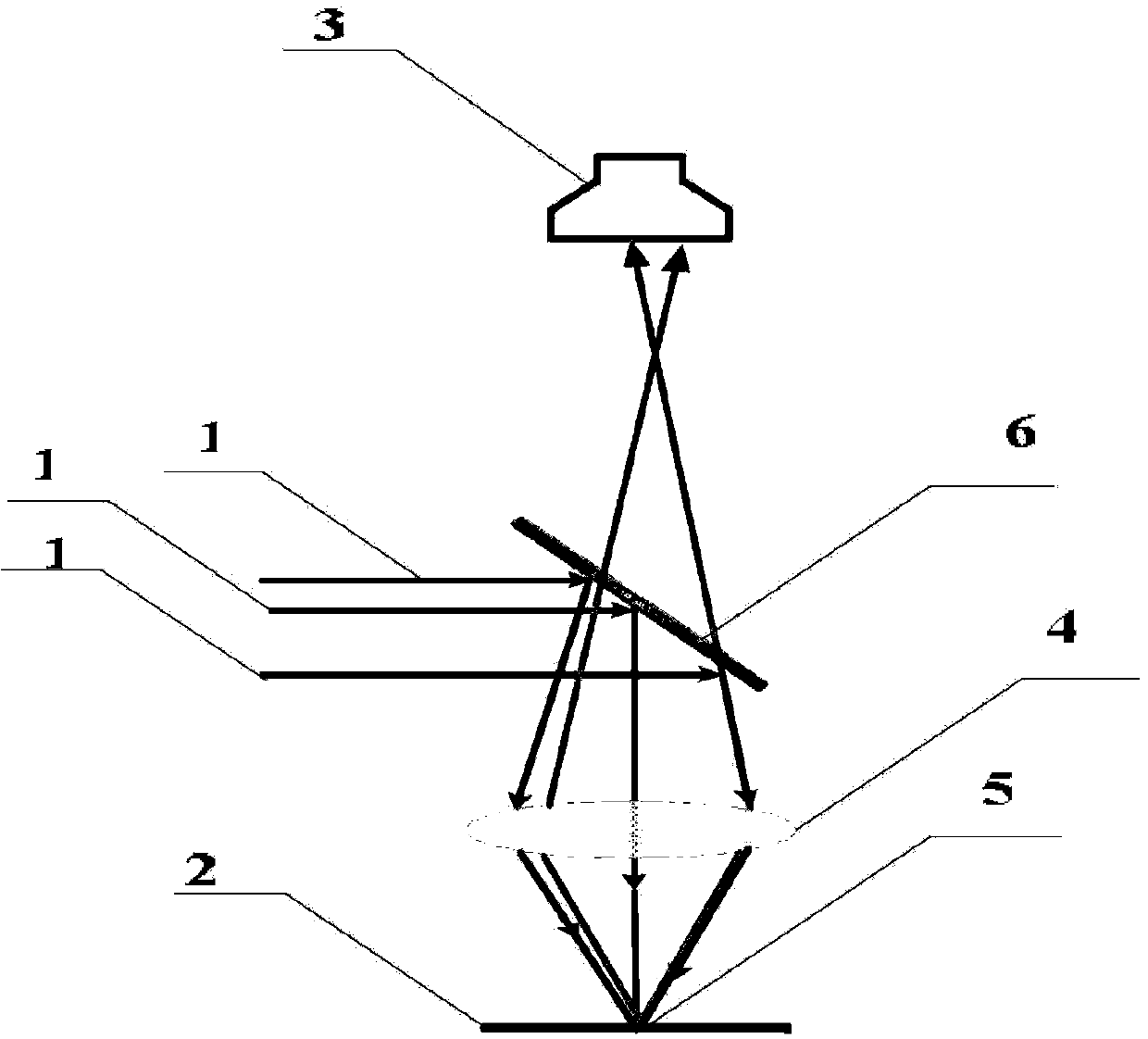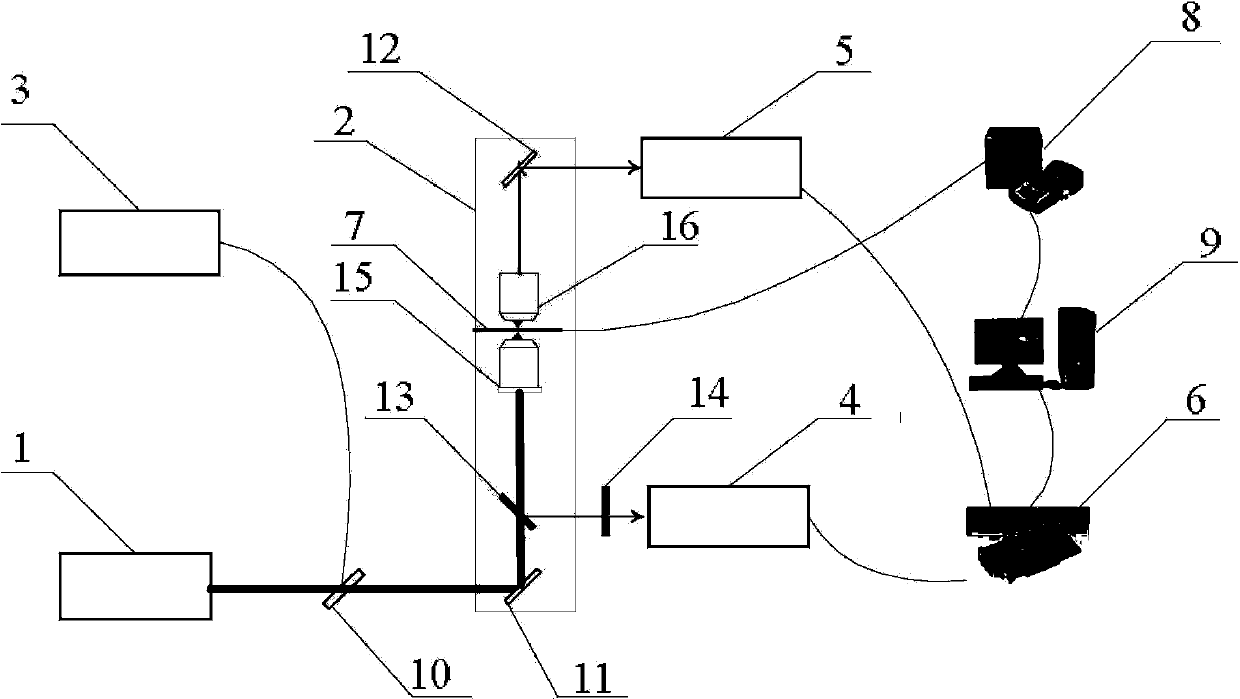Femtosecond laser two-photon fluorescent biological microimaging system and imaging method thereof
A two-photon fluorescence and femtosecond laser technology, which is applied in fluorescence/phosphorescence, material excitation analysis, material analysis through optical means, etc., can solve the problems of generating two-photon fluorescence signals, unable to excite samples, and unable to complete imaging of samples, etc. Achieve low-cost results
- Summary
- Abstract
- Description
- Claims
- Application Information
AI Technical Summary
Problems solved by technology
Method used
Image
Examples
specific Embodiment approach 1
[0033] Specific implementation mode one: combine image 3 Describe this embodiment, a femtosecond laser two-photon fluorescence biomicroscopic imaging system, characterized in that: the system includes: tunable femtosecond laser source Tsunami (1), biological microscope (2), spectrometer (3), Photomultiplier tube (4), photodiode (5), data acquisition card (6), electric translation stage (7), electric translation stage controller (8), computer (9) and beam splitter (10); The biological microscope (2) includes a mirror M1 (11), a mirror M2 (12), a dichroic mirror (13), an emission filter (14), an objective lens (15) and a light collector (16);
[0034] The laser light generated by the tunable femtosecond laser source Tsunami (1) splits the laser light through a beam splitter (10), and enters the biological microscope (2) and spectrometer (3) respectively, and the spectrometer (3) is used to monitor the tunable The working state of the femtosecond laser source Tsunami (1), the l...
specific Embodiment approach 2
[0045] Specific embodiment two: this embodiment differs from specific embodiment one in that: the emission filter (14) is made of a band-pass filter and an infrared cut-off filter, and the band-pass filter is located near the dichroic mirror (13) On one side, the infrared cut-off filter is located on the side close to the photomultiplier tube (4).
specific Embodiment approach 3
[0046] Embodiment 3: The difference between this embodiment and Embodiment 1 or 2 is that the laser generated by the tunable femtosecond laser source Tsunami is an ultrashort pulse with a center wavelength of 800 nm, a repetition frequency of 82 MHz, and a pulse width of 50 fs Mode-locked laser.
PUM
| Property | Measurement | Unit |
|---|---|---|
| Center wavelength | aaaaa | aaaaa |
| Pulse width | aaaaa | aaaaa |
Abstract
Description
Claims
Application Information
 Login to View More
Login to View More - R&D
- Intellectual Property
- Life Sciences
- Materials
- Tech Scout
- Unparalleled Data Quality
- Higher Quality Content
- 60% Fewer Hallucinations
Browse by: Latest US Patents, China's latest patents, Technical Efficacy Thesaurus, Application Domain, Technology Topic, Popular Technical Reports.
© 2025 PatSnap. All rights reserved.Legal|Privacy policy|Modern Slavery Act Transparency Statement|Sitemap|About US| Contact US: help@patsnap.com



